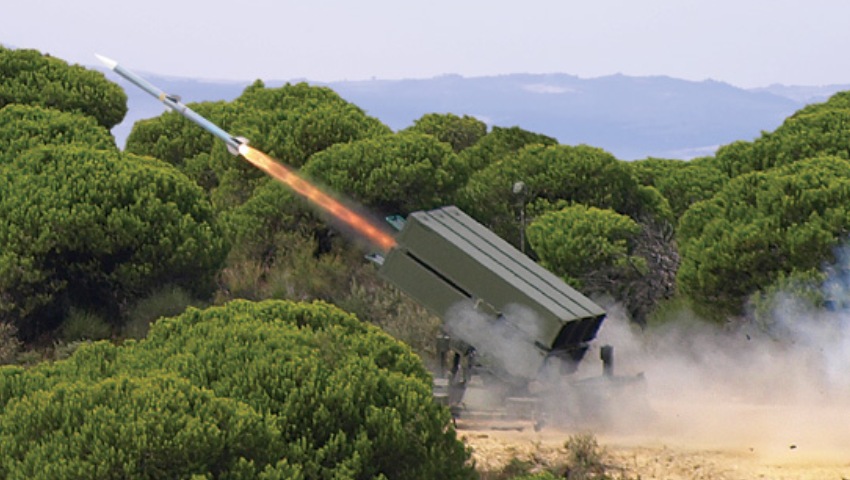A new analysis proposes a blueprint for the local production of guided missile technology.
To continue reading the rest of this article, please log in.
Create free account to get unlimited news articles and more!
Marcus Hellyer, senior analyst for defence economics and capability at the Australian Strategic Policy Institute (ASPI), has published a new report — Cracking the missile matrix: The case of Australian guided weapons production — in which he assesses the nation’s capacity to locally produce guided missile systems.
Hellyer notes the importance of a sovereign guided missile capability, using the recent conflict between Azerbaijan and Armenia as a case study.
“By effectively employing precision guided weapons, [Azerbaijan] rapidly forced [Armenia] to capitulate and accede to its political demands,” he writes.
“The conflict confirmed the centrality of guided weapons to modern warfighting and showed how small states can now master the technologies and techniques needed to use them.”
The ASPI analyst also references the supply-chain fragilities exposed by the COVID-19 crisis, which “provoked much soul-searching” from both the public and private sectors.
“When we take those two events together, it’s clear that the Australian Defence Force will not only need many kinds of guided weapons across the spectrum of conflict, but also need to guarantee their availability in times of crisis when supply chains will be under pressure and threat,” Hellyer notes.
“That will be difficult, since Australia currently manufactures virtually no guided weapons.”
Hellyer stresses that Australia has the industrial capability to produce guided weapons, pointing to “a long and successful living history”.
“We can also draw upon ‘missile-adjacent’ sectors such as space and autonomous systems as well as leverage the power of the fourth industrial revolution to accelerate the design and manufacture of weapons,” he continues.
“We can also leverage our alliance with the US to establish production lines for US weapons here, to the benefit of both partners.”
The ASPI analyst acknowledges the government’s commitment to establishing a guided-weapons ‘enterprise’, but bemoans the lack of detail.
Hellyer proposes a number of recommendations, which he believes would advance the government’s agenda, including the adoption of a “programmatic approach”.
“[Rather] than allowing the number of types of weapons that it uses multiply by letting individual projects choose different weapons for different platforms, it needs to make decisions that take all relevant factors into account and choose weapons or families of weapons that will be used across multiple platforms,” he argues.
“That approach will have many benefits. Acquiring more weapons of fewer types will increase the economies of scale of local production. It will also help to contain the overheads of ownership, such as sustainment costs, the logistics chain and integration costs.”
He writes that such an approach would involve “backing winners up front”.
“While some may have concerns about the potential loss of commercial leverage, Defence is already using such an approach with success, for example in the navy’s combat management system, for which the government has decided that all classes of ships must use Saab’s combat system,” he continues.
“This will involve seeing industry as long-term partners, rather than simply as suppliers — but that’s already a fundamental tenet of the government’s defence industry policy.”
Hellyer claims that losing commercial leverage would be a “manageable issue”, adding that Defence would be a “more powerful, larger customer” if it procured missiles using domestic co-production and the “family of weapons” approach.
He goes on to note that a guided-weapons enterprise could draw from the nation’s naval shipbuilding plan, including additional R&D funding, support for the establishment of precincts, and coordinated training and education programs to support workforce development.
“Making guided weapons one of Defence’s ‘sovereign industrial capability priorities’, supported by an implementation plan, also makes sense as part of this broader plan,” he adds.
However, Hellyer stresses that Australia cannot wait for the “perfect plan”.
“The urgency of our strategic circumstances means we need to start now,” he writes.
“There are many mature weapons that the ADF is already using or has decided to buy that we can start producing here now with minimal risk.”
But the ASPI analyst also urges the government to invest in the development of technologies like hypersonic weapons that can be produced in Australia “once mature”.
Hellyer concludes: “The government has established a national enterprise to build ships, submarines and armoured vehicles in Australia, but, without guided weapons, those platforms will have limited utility.
“Put simply: a small number of military platforms without a large supply of advanced missiles is a force fitted for but not with combat power.
“The government’s decision to establish a guided-weapons enterprise, if implemented well, will be a key step in providing the ADF’s platforms with the advanced missiles in the types and quantities they need to deliver lethal and survivable capability.”
Get involved with the discussion and let us know your thoughts on Australia's future role and position in the Indo-Pacific region and what you would like to see from Australia's political leaders in terms of partisan and bipartisan agenda setting in the comments section below, or get in touch with
Charbel Kadib
News Editor – Defence and Security, Momentum Media
Prior to joining the defence and aerospace team in 2020, Charbel was news editor of The Adviser and Mortgage Business, where he covered developments in the banking and financial services sector for three years. Charbel has a keen interest in geopolitics and international relations, graduating from the University of Notre Dame with a double major in politics and journalism. Charbel has also completed internships with The Australian Department of Communications and the Arts and public relations agency Fifty Acres.

 Login
Login








